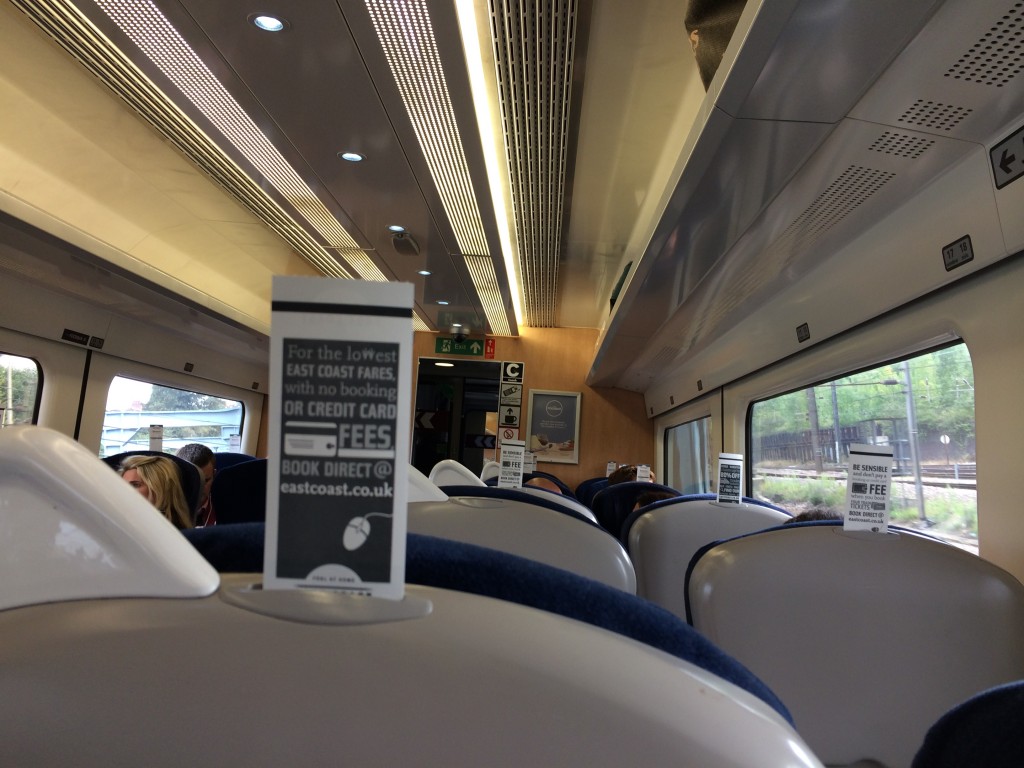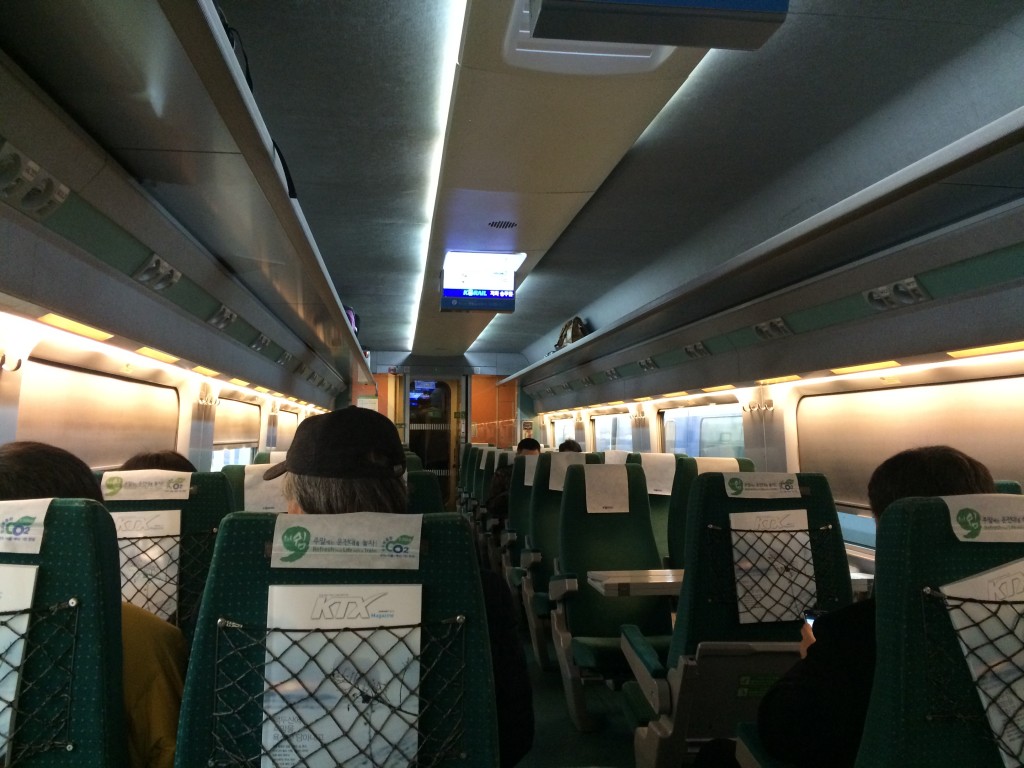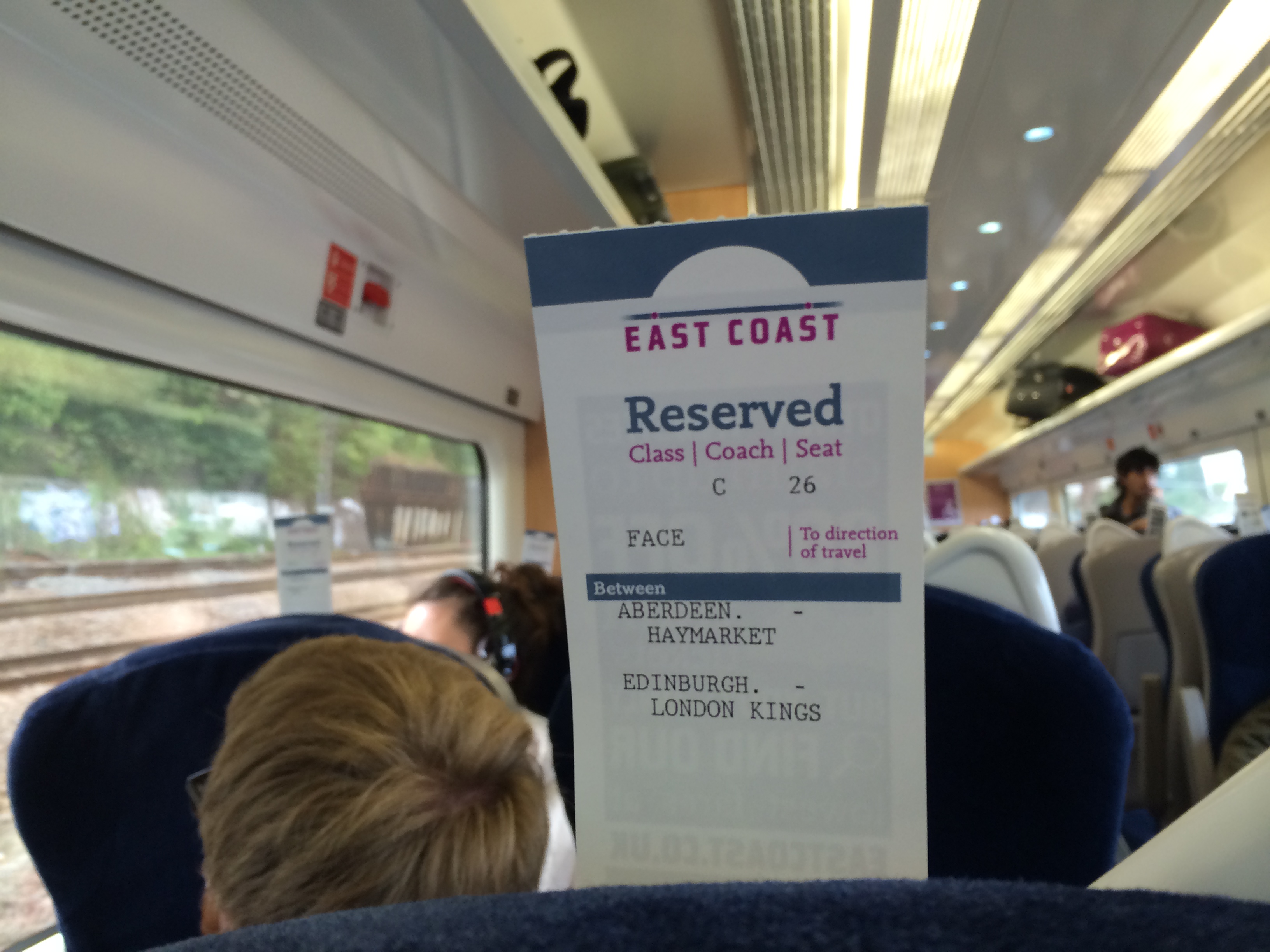I recently traveled on trains in UK (London – Edinburgh) and in Korea (Seoul – Busan) and found two interesting differences.
First, I used a physical train ticket in UK and used an electronic ticket in Korea. In UK, I collected a paper ticket at the station and then physically showed it to the conductor on board at the time of ticket control. Interestingly, a slot was designated for train ticket on the headrest of each seat; thus, I did not have to interact with the conductor. Differently from this mechanical system, I paid for a train ticket online and my seat was booked in advance in Korea. Overall, I preferred the traditional mechanical way of working over the electronic one. Although the electronic system sounds convenient, I had spent more than 2 hours at home on going through hundreds of websites to buy a single train ticket online. I wish people do not replace the mechanical approach with the electronic one simply because the electronic approach looks cool.
Another interesting difference was that train seats in UK are higher than the train seats in Korea. In the UK train, people find it difficult to confirm whether a seat was taken or empty. However, it was relatively easy in the Korean train. Certainly, train seats were designed differently based on the average height of the people in each country. However, this difference further suggest that privacy matters more in the UK culture whereas publicness seems to be weighted more in the Korean culture.

UK train (London – Edinburgh)
vs.
Korean train (Seoul – Busan)


One thought on “Train experience: Mechanical vs. Electronic”